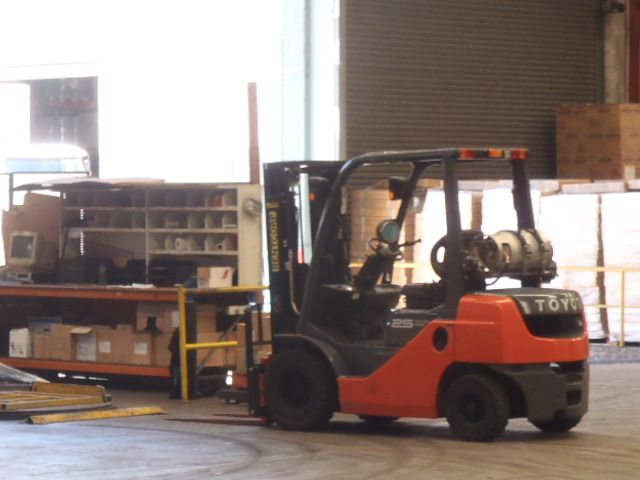Safe Environments Pty Ltd was commissioned by logistics and transportation company to assess the noise levels that workers may be exposed to within a warehouse and ensure that they complied with the workplace health and safety noise regulations. The warehouse supplied building components and the main forms of noise exposure is that of forklifts loading and unloading the components.
Noise from the Logistics Warehouse
Here were three Similar Exposure Groups (SEGs) that were assessed within the warehouse which included:
- Forklift drivers
- Truck Driver
- Logistics warehouse packers
Sound level measurements were taken with a dosimeter that were attached to the forklift driver’s shoulder. The forklift driver wears the small dosimeter over the length of a shift to measure the average noise levels, to compare against the national exposure standards
The Main Noise Exposed SEG – Forklift Drivers
The noise form the forklifts is mostly due to the warning tones when the forklifts are reversing. The warning tones may be around 90-95 dB(A). Even though this may be short bursts of duration, when averaged it can is generally around the 85 dB(A) mark. This means that the noise exposure is significant and controls need to be put in place
Hearing Protection when using Forklifts in a Warehouse
As the noise exposure needs to be reduced to be below 85 dB(A), hearing protection is generally supplied; however it is generally the wrong type. Both over ear or in-ear hearing protection that is commonly provided is Class 5. This will over-protect the forklift driver and can be a safety concern in itself. If a forklift driver in a logistics warehouse has noise reduced through hearing protection, then they may not hear people or other warning tones, causing an accident.
The Right Hearing Protection for Warehouse Staff & Forklift Drivers
If hearing protection is to be provided to forklift drivers within a logistics warehouse, then it needs to be of the right classification. This will generally be Class 2 hearing protection, to allow the forklift driver to still hear warning tones and communicate with other people effectively. The only way to tell what the right level of hearing protection is, is to have a detailed noise assessment undertaken.
It isn’t just as simple providing hearing protection of the warehouse staff; sufficient training and instruction also needs to be undertaken. This is particularly true for ear plugs, where it is quite common to find that warehouse staff do not know how to insert the earplugs properly.
The perfect time for noise awareness training is during audiometric testing. Audiometric testing is required every two years in accordance with the Australian Standards AS/NZS 1269.4 Audiometry Assessment. Ideally it should be conducted more frequently, on an annual basis, particularly if there are ototoxic agents or significant hand arm vibration.
Other risk associated with forklift driving is Whole Body Vibration and driving postures. This can cause musculoskeletal disorders and is dependant to a large degree on how smooth the floors are.
For a detailed noise survey or audiometric testing, please contact Safe Environments, based in Sydney and Melbourne.
Author: Carl Strautins

Email: Carl@SafeEnvironments.com.au
Carl Strautins is a managing director of Safe Environments Pty Ltd a multi-specialist consultancy operating in the building, construction and property management industries. He provides the necessary guidance and risk minimisation strategies required by architects, construction companies and facility managers to ensure they mitigated their risk to property risk. He is engaged on a regular basis to provide expert opinion for disputes and legal proceedings. Click here to know more about him.


